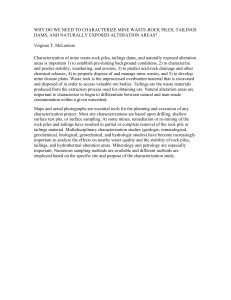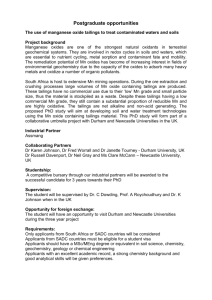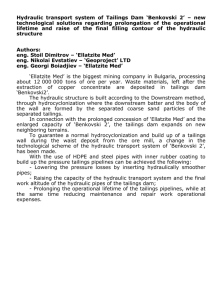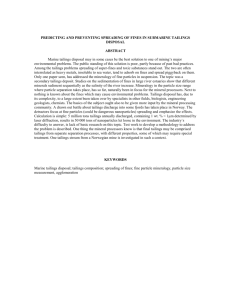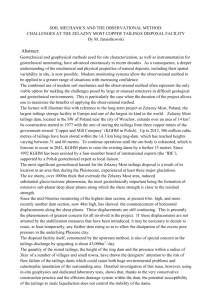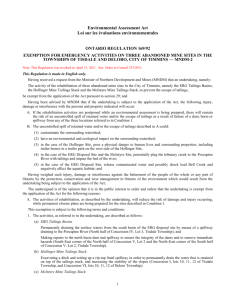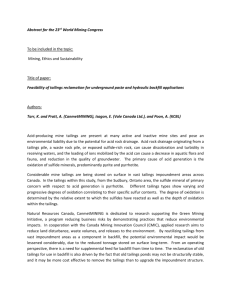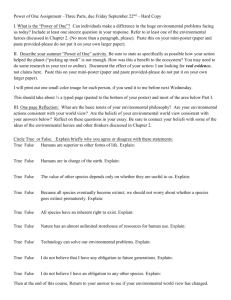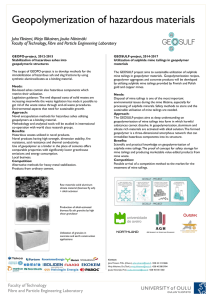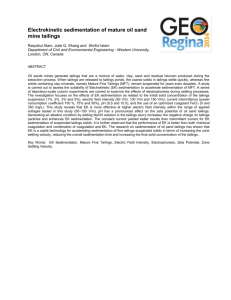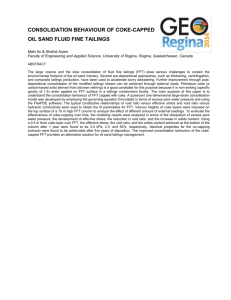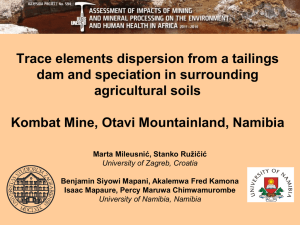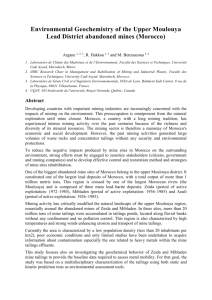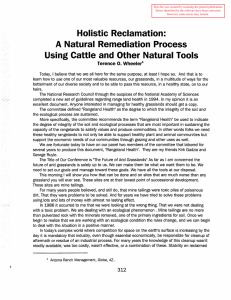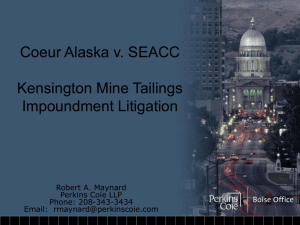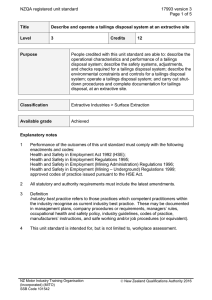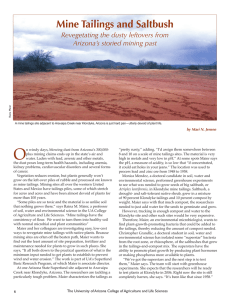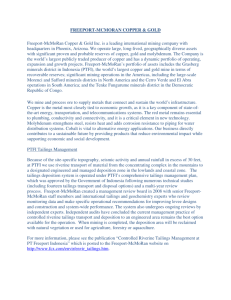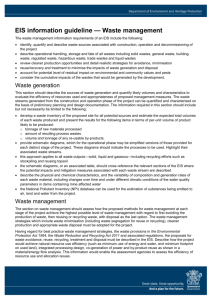3D consideration for evaluating earth pressures in vertical backfilled
advertisement
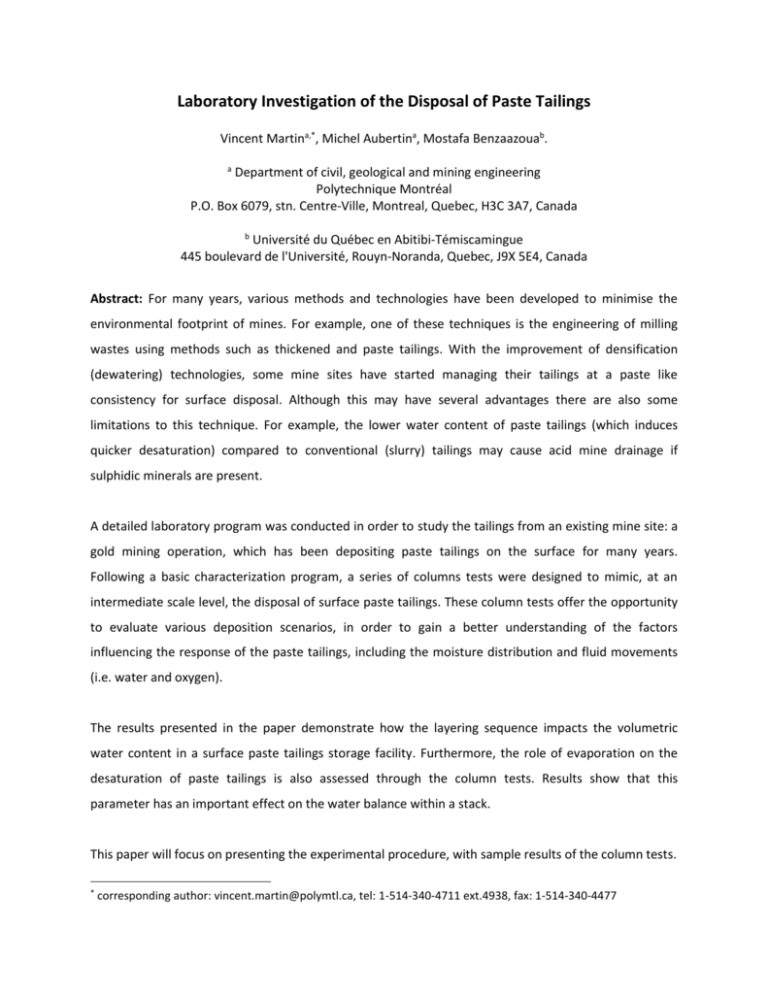
Laboratory Investigation of the Disposal of Paste Tailings Vincent Martina,*, Michel Aubertina, Mostafa Benzaazouab. a Department of civil, geological and mining engineering Polytechnique Montréal P.O. Box 6079, stn. Centre-Ville, Montreal, Quebec, H3C 3A7, Canada b Université du Québec en Abitibi-Témiscamingue 445 boulevard de l'Université, Rouyn-Noranda, Quebec, J9X 5E4, Canada Abstract: For many years, various methods and technologies have been developed to minimise the environmental footprint of mines. For example, one of these techniques is the engineering of milling wastes using methods such as thickened and paste tailings. With the improvement of densification (dewatering) technologies, some mine sites have started managing their tailings at a paste like consistency for surface disposal. Although this may have several advantages there are also some limitations to this technique. For example, the lower water content of paste tailings (which induces quicker desaturation) compared to conventional (slurry) tailings may cause acid mine drainage if sulphidic minerals are present. A detailed laboratory program was conducted in order to study the tailings from an existing mine site: a gold mining operation, which has been depositing paste tailings on the surface for many years. Following a basic characterization program, a series of columns tests were designed to mimic, at an intermediate scale level, the disposal of surface paste tailings. These column tests offer the opportunity to evaluate various deposition scenarios, in order to gain a better understanding of the factors influencing the response of the paste tailings, including the moisture distribution and fluid movements (i.e. water and oxygen). The results presented in the paper demonstrate how the layering sequence impacts the volumetric water content in a surface paste tailings storage facility. Furthermore, the role of evaporation on the desaturation of paste tailings is also assessed through the column tests. Results show that this parameter has an important effect on the water balance within a stack. This paper will focus on presenting the experimental procedure, with sample results of the column tests. * corresponding author: vincent.martin@polymtl.ca, tel: 1-514-340-4711 ext.4938, fax: 1-514-340-4477
